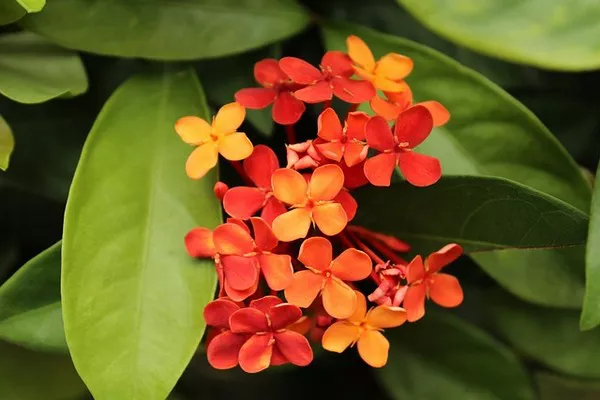The beauty of gardens and the vibrant colors of blooming flowers often attract humans and insects alike. While the allure of a garden is evident to us, the presence of bugs can often turn the experience into a bothersome affair. Fortunately, nature provides us with a solution: certain flowers can act as natural bug repellents. In this article, we will explore a variety of flowers that not only enhance the aesthetics of your garden but also help keep unwanted bugs away.
1. Marigolds: The Pest Deterring Powerhouse
Marigolds, with their bright orange and yellow blooms, are renowned for their bug-repelling abilities. Their strong scent is particularly effective in deterring mosquitoes, aphids, and even nematodes, which can harm your vegetable garden. Planting marigolds alongside your vegetables can serve as a natural form of pest control. These flowers are low-maintenance and flourish in various climates, making them an excellent choice for both novice and experienced gardeners.
2. Lavender: A Soothing Scent that Bugs Despise
Lavender is celebrated for its fragrant, calming aroma, which humans adore but insects abhor. This versatile plant is known to repel mosquitoes, flies, and moths effectively. Planting lavender near windows or outdoor seating areas can help keep mosquitoes at bay, allowing you to enjoy your outdoor spaces without the annoyance of buzzing insects.
3. Chrysanthemums: Nature’s Insecticide
Chrysanthemums, often referred to as “mums,” are not just a feast for the eyes but also a powerful natural insecticide. They contain a compound called pyrethrin, which is commonly used in commercial insect repellent sprays. Mums can help control a wide range of insects, including ants, roaches, ticks, and silverfish. To maximize their bug-repelling potential, consider planting them in pots or containers on your porch or near entryways.
4. Petunias: Guardians of the Tomato Patch
Petunias, with their trumpet-shaped blossoms, are a colorful addition to any garden. However, their role as bug repellents, especially in protecting tomato plants, is less known. These vibrant flowers can deter aphids, hornworms, and various other pests that commonly target tomato plants. Placing petunias around your tomato garden can contribute to healthier, pest-free plants.
5. Rosemary: A Fragrant Herb with Bug-Repelling Properties
Rosemary, an aromatic herb, serves as a double delight in your garden. Not only does it enhance your culinary creations, but it also acts as a natural insect repellent. Rosemary’s strong scent deters flies, mosquitoes, and even cabbage moths. Consider planting rosemary near outdoor dining areas to create a bug-free zone while adding flavor to your dishes.
6. Nasturtiums: A Trap Crop for Garden Pests
Nasturtiums are not only visually appealing, with their vibrant orange and yellow flowers, but they also act as a sacrificial plant in your garden. They attract aphids, whiteflies, and cabbage loopers away from your vegetables and serve as a trap crop. Nasturtiums can be strategically planted near your vegetable garden to protect your precious crops from these destructive pests.
7. Citronella: The Ultimate Mosquito Repellent
Citronella is renowned for its potent mosquito-repelling properties and is a common ingredient in many commercial mosquito repellent products. Citronella plants release a strong citrusy scent when crushed or brushed against, effectively deterring mosquitoes. By placing citronella plants in pots around your outdoor seating area, you can create a mosquito-free oasis for relaxing evenings.
8. Alliums: Ward Off Aphids, Slugs, and More
Alliums, which include onions, garlic, and chives, are not just valuable additions to your kitchen but also effective bug repellents in your garden. Their pungent aroma keeps aphids, slugs, and carrot flies away from neighboring plants. Planting alliums alongside susceptible vegetables can help safeguard your garden from these common pests.
9. Bee Balm: Attract Pollinators, Repel Mosquitoes
Bee balm, as the name suggests, is a favorite among bees and other pollinators. While it attracts beneficial insects, it repels mosquitoes due to its strong, minty fragrance. Incorporating bee balm into your garden not only promotes pollination but also ensures a more pleasant outdoor experience, free from mosquito bites.
10. Mint: A Versatile Bug Repellent
Mint, known for its refreshing flavor and aroma, is a versatile bug repellent. Its strong scent wards off ants, flies, and even rodents. Mint is an excellent choice for container gardening, and it can be grown in pots strategically placed around your home to deter bugs from entering.
Conclusion
Incorporating bug-repelling flowers into your garden not only adds beauty and fragrance but also reduces the need for chemical insecticides. Whether you’re looking to enjoy bug-free evenings on your patio or protect your vegetable garden from harmful pests, these flowers offer a natural and environmentally friendly solution. By planting a variety of these bug-repelling blooms, you can create a harmonious and pest-free garden that both you and nature will appreciate. So, embrace the power of these natural bug repellents, and let your garden bloom while keeping bugs at bay.


